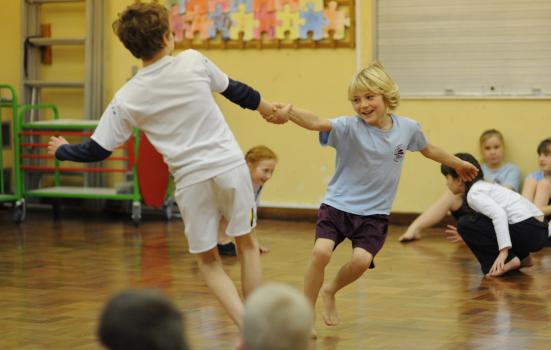As this was the last session of the Integrated Arts module, the first part of the day was dedicated to a drop in session relating to the upcoming assignment. This time allowed me to reflect on all I had gained from engaging with this module.
I feel I have grown in confidence and feel I would now be able to teach expressive arts within my own classroom. Whereas before this module, I would have realistically taught the arts when necessary. I have learned that the arts can be integrated into all subject areas and as teachers we should encourage children to build their creativity skills as they have many benefits as discussed throughout each blog post. Being creative can support a wide range of tasks, including environmentally, culturally and within the community (Education Scotland, 2013).
The first workshop of the day was our last input of music. The focus of todays lesson was the ukulele. Julie explained how the ukuleles we were using could be bought online for around £10, so are relatively inexpensive for a primary school to have in store. We were then shown a youtube clip of The Ukulele Teacher who demonstrates how to tune a ukulele if you do not have a musical background, however Julie was able to tune them for us on this occasion. I feel I would find this quite difficult if I were to use ukuleles in my classroom and so would have to build up my confidence in this area.IMG_3069
We built up to playing different tunes through First Ukulele Lessons in the Classroom by Ann Rae. Her lessons are very self explanatory and goes into great detail explaining where the ukulele has came from and the different string attached.
After working our way through the songs in this resource, we finished by playing Last Christmas by Wham! to finish the session.

Our last dance workshop was a combination of performing the routine we had been working on throughout our sessions and then appreciating what we had created by watching our performance back.
As stated in a previous blogpost, through Curriculum For Excellence, pupils are expected to create, perform and appreciate dance. In order to gain experience of how this could be implemented in the classroom, our cohort completed all three elements throughout this module. We used the medium of 3 stars and a wish for gaging our thoughts and feelings on the dance as the form of evaluation.
Using the notes on the board, for example, did the dance look aesthetically pleasing? Using examples such as these allowed the class to evaluate our performance and write down our evaluation. Thus, enabling us to have created, performed and evaluated dance. By accomplishing these three tasks enables benchmarks to be completed by pupils.
However, it has been stated that teachers have felt as though they have not had enough training on dance whilst at university, and feel intimidated by the ambiguous language used within Curriculum for Excellence surrounding dance outcomes. Having taken part in the module, I feel I have become equipped to not only teach dance, but all of the expressive arts.
Reference List
Education Scotland (2013) Creativity 3-18 Curriculum Impact Report. [Online] Available : http://moodle.uws.ac.uk/pluginfile.php/532076/mod_resource/content/2/Creativity3to18.pdf [Accessed: 1st December 2019].

 We were asked to incorporate a beginning position, changing of position at least once, a choreographic device such as a cannon and an end position. This relates to the experiences and outcome: I am becoming aware of different features of dance and can practise and perform steps, formations and short dance. EXA 1-10 (Education Scotland, 2017).
We were asked to incorporate a beginning position, changing of position at least once, a choreographic device such as a cannon and an end position. This relates to the experiences and outcome: I am becoming aware of different features of dance and can practise and perform steps, formations and short dance. EXA 1-10 (Education Scotland, 2017). We worked through a powerpoint on tuned percussion donated by a colleague our lecturer previously worked with. This powerpoint focused on learning to play the different notes in a c scale. The end of the session was spent doing improvising on the glockenspiel (as shown below) using a pentatonic scale so whatever tune was played it could not sound bad.
We worked through a powerpoint on tuned percussion donated by a colleague our lecturer previously worked with. This powerpoint focused on learning to play the different notes in a c scale. The end of the session was spent doing improvising on the glockenspiel (as shown below) using a pentatonic scale so whatever tune was played it could not sound bad.



 These images were meant to deliberately test our tolerance of ambiguity, which is essential within the arts. I felt I was able to decipher the meaning of the image I was given, along with accepting the possibility that someone else may have had a differing opinion to me.
These images were meant to deliberately test our tolerance of ambiguity, which is essential within the arts. I felt I was able to decipher the meaning of the image I was given, along with accepting the possibility that someone else may have had a differing opinion to me.

